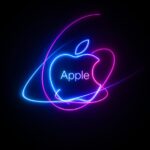Apple (NASDAQ:AAPL)’s iPhone XVI launch is stirring significant interest in the tech community. The anticipation surrounding Apple’s latest release is tempered by a series of issues impacting its reception. While the new iPhone model introduces some enhancements, it struggles to differentiate from previous iterations significantly. Coupled with external market pressures, Apple must navigate a complex landscape to maintain its position.
The iPhone XVI follows a history of highly anticipated Apple product launches. However, past models have generally met with more enthusiasm. With the iPhone XV, the company saw strong sales bolstered by innovative features. The current model, however, faces skepticism from consumers who are not convinced by the minor upgrades and delayed software updates. Despite the brand’s strong reputation, this release may not repeat the success of its predecessors.
What Are the Key Issues with the iPhone XVI?
The iPhone XVI’s introduction has been hindered by several factors. Notably, the release of its new operating system, iOS 18, has been postponed, reducing the immediate appeal of the device. Many potential buyers are reluctant to invest in a product that does not offer its full range of capabilities from the outset. Apple’s decision has led to concerns about the phone’s ability to compete in a rapidly evolving market.
Can Apple Compete in the Chinese Market?
Competition from Chinese manufacturers, who are making significant strides in smartphone innovation, presents another challenge. Brands like Huawei are producing foldable phones that attract considerable consumer interest. Apple’s traditional design approach may not be sufficient in a market that values cutting-edge technology. The increasing quality and popularity of Chinese brands suggest Apple’s dominance is not assured.
Apple has acknowledged the competitive landscape: “We are aware of the challenges and are continuously innovating to meet consumer needs.”
Apple’s advertising strategy has also evolved, as the company invests heavily in marketing to boost the iPhone XVI’s appeal. Unlike previous launches, which thrived with minimal promotion, the current model requires a more aggressive approach. This shift indicates that the product may not generate the anticipated excitement or self-sustaining demand.
The iPhone XVI’s subdued reception highlights the growing need for Apple to innovate beyond incremental updates. As consumers become more discerning, the demand for substantial advancements increases. While the Apple brand continues to command significant loyalty, the tech giant must address these challenges to sustain its market leadership.
The iPhone XVI’s release underscores a pivotal moment for Apple. As they face increased competition and evolving consumer expectations, the company must balance tradition with innovation. The delayed software and minor updates reflect a cautious approach that may not suffice in today’s dynamic tech environment. Apple’s future success will depend on its ability to adapt and innovate to meet changing market demands.










